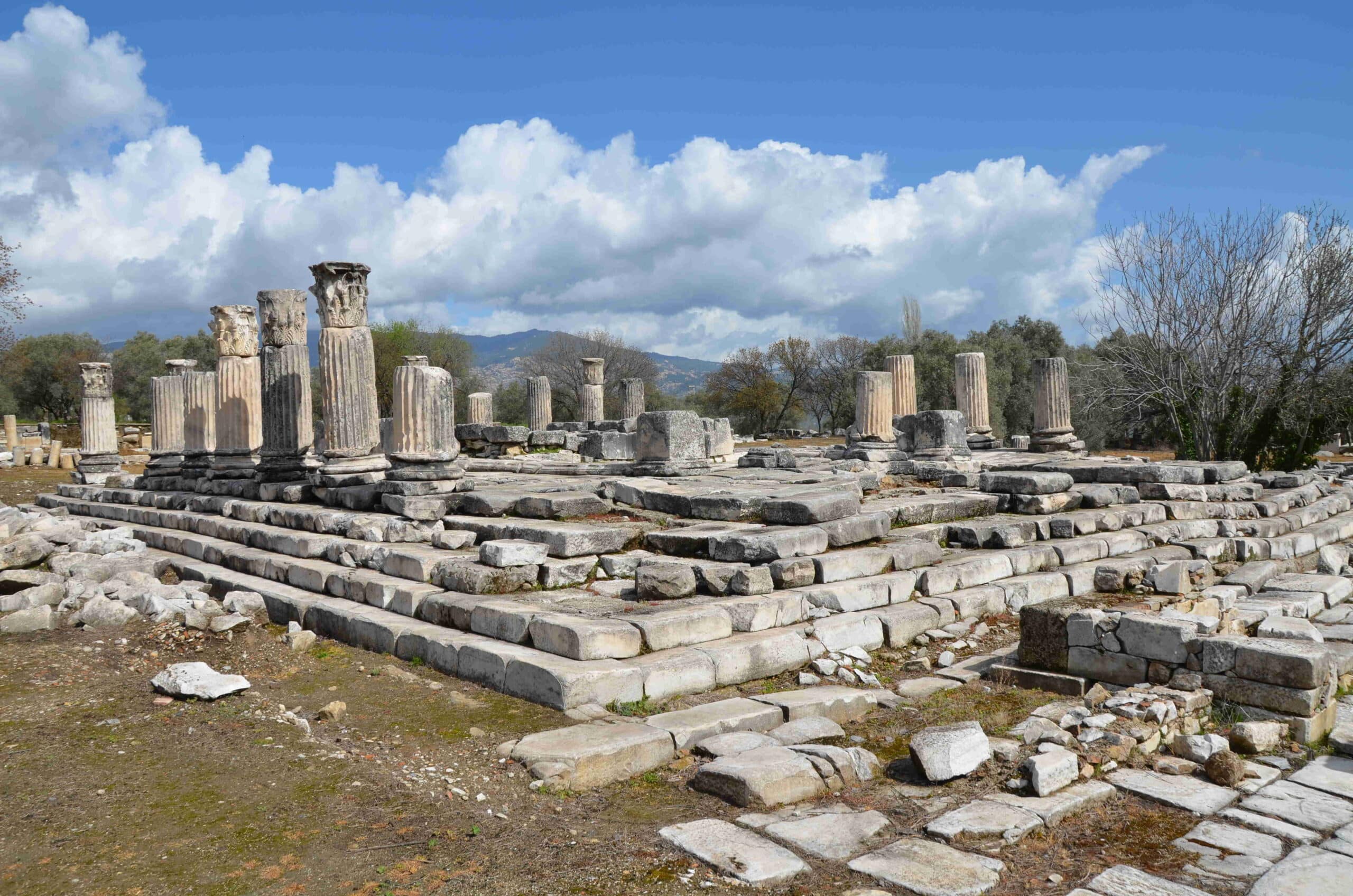

Archaeologists working at the ancient Greek city of Lagina (Greek: Λάγινα), in the historical region of Caria in southwestern Turkey, have uncovered remarkable new finds at the Sanctuary of Hecate, a major religious center of the Hellenistic world.
Though the site is located in present-day Turkey, its origins, language, architecture, and religious significance are deeply rooted in Greek culture.
Located in the modern province of Muğla, the sanctuary flourished during the Hellenistic and Roman periods and served as one of two major cult centers for the ancient Greek city of Stratonikeia, about 8.5 kilometers away.
As part of the ongoing “Heritage for the Future” project, archaeologists have unearthed the monumental city gate, rows of shops, and a colonnaded stoa, all reflecting classical Greek architectural style.
These structures marked the entrance to the sanctuary, welcoming pilgrims into a space where daily life and sacred rituals came together.
Among the finds are original roof tiles preserved where they fell, along with decorative stone elements and several Corinthian capitals. One rare capital carved with human-like figures, dating to the 2nd century AD, stands out as a unique artistic treasure—the first of its kind found at Lagina.
Muğla’nın Yatağan ilçesinde bulunan edilen Lagina Hekate Kutsal Alanı’nda yürütülen kazı çalışmalarında kentin giriş kapısı ve dükkanlar gün yüzüne çıkarılıyor.
Stratonikeia ve Lagina Kazı Heyeti Başkanı Prof. Dr. Bilal Söğüt, “Bu yıl Geleceğe Miras Projesi kapsamında antik… pic.twitter.com/bZjR52Ehxc
— arkeolojihaber ® (@arkeolojihaber) May 14, 2025
These discoveries help reconstruct the layout of the sanctuary’s entrance, which until now had remained unclear. The finds offer a window into how ancient worshippers experienced the site.
The sanctuary is recognized as the largest known temple to Hecate, the Greek goddess of magic, crossroads, and protection. Though honored across the ancient Greek world, it was at Lagina where her cult reached its most elaborate form.
A sacred processional road once connected Lagina to Stratonikeia, used during religious festivals when priests and worshippers made their way to the temple for ceremonies in Hecate’s honor.
Stratonikeia ve Lagina Kazı Heyeti Başkanı Prof. Dr. Bilal Söğüt’ün liderliğinde Muğla’nın Yatağan ilçesinde bulunan edilen Lagina Hekate Kutsal Alanı’nda yürütülen kazı çalışmalarında kentin giriş kapısı ve dükkanlar gün yüzüne çıkarılıyor.#arkeoloji #anadolu pic.twitter.com/5B4VIx3gCs
— Arkeoloji Anadolu (@arkeolojiyasam) May 14, 2025
“From the Eastern Mediterranean to Spain, people from 22 countries attended these ceremonies, making Lagina a significant center of the ancient world,” said Professor Bilal Söğüt, head of the excavation.
First excavated in 1891 by Osman Hamdi Bey, Lagina marked the earliest Turkish-led archaeological dig. Many of the artifacts from that campaign are preserved in the Istanbul Archaeological Museum. Today, the project builds on that legacy while embracing modern methods.
Using 3D scanning and modeling, researchers are digitally reconstructing the site in real time. Nearly four meters of accumulated earth have been carefully removed by hand to protect fragile remains. These digital models will guide future preservation efforts and help prepare the sanctuary for public visits.
The goal is to one day allow visitors to follow the ancient ceremonial path, walking through the gate, past the restored shopfronts, and into the heart of the temple, just as Greek pilgrims once did.
